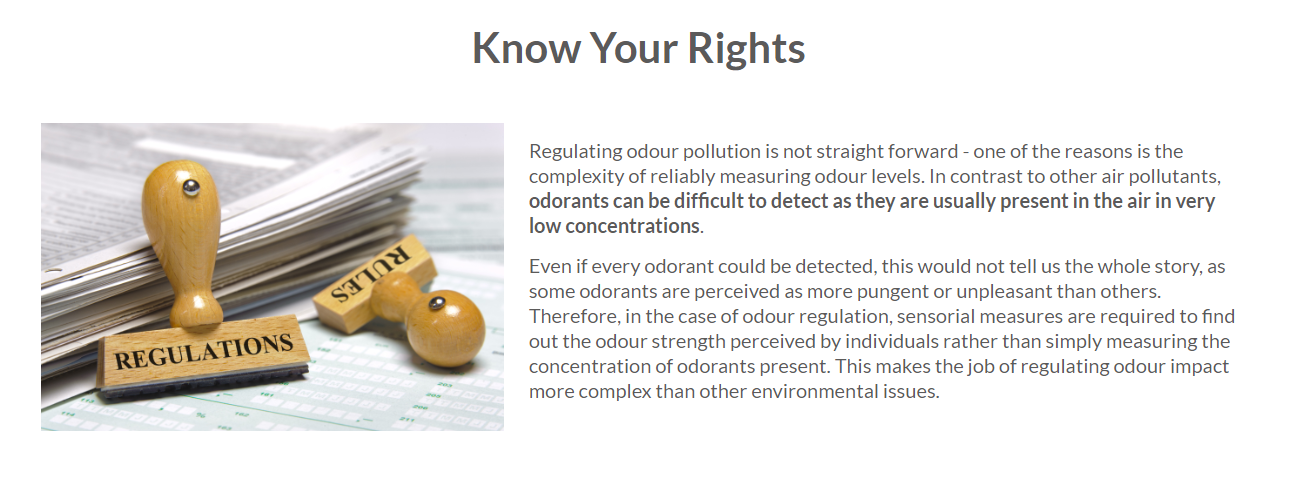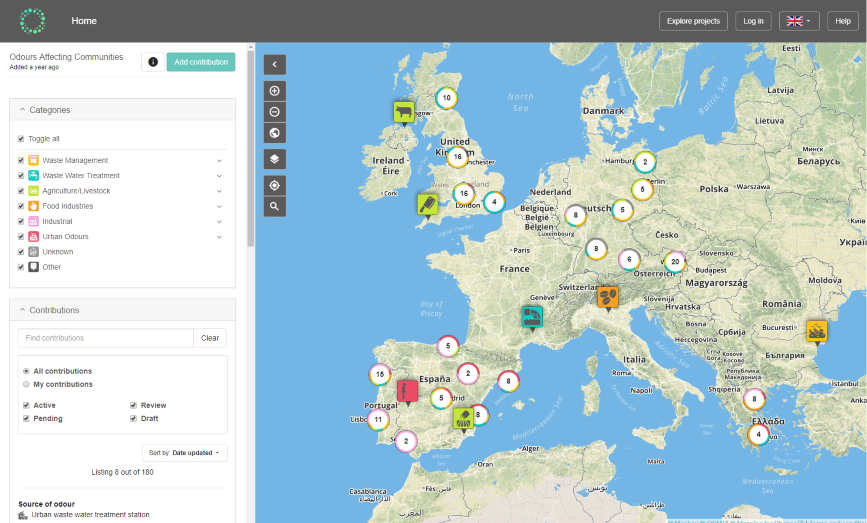One the crucial functions of the D-NOSES project is to support Principle 10 of the Rio Declaration by providing access to information about odour pollution issues. The audience requiring this access will inevitably be citizens with little knowledge and inteterest in science and databases. Which makes it essential to present the data in a manner that is both digestable and useful, so that readers can understand the issues, and search for appropriate solutions.
Once data is collected and validated, the next step is to transform that into information. Information is presenting data in a way that is easily digestible and accessible to those that can use that information. To do this, the Mapping for Change team has developed the Community Mapping tool that is being put to good use in the Odour Observatory.
Community Maps essentially provides a platform that creates crowd-sourced maps. Each map can be filled in with different layers of information, which can be provided by registered users. For D-NOSES, it is being first used to create an overall map that provides information about the different odour regulations in different regions across Europe and eventually the rest of the world. By providing this information, citizens affected by odour issues can easily check what are the official regulations, what are their rights in regards to odour pollution and who they can address with complaints.

The maps will also integrate the data from the OdourCollect app, once it is validated. This will be the affected communities map, which will describe odour issues in specific locations, and describe the issue, the type and intensity of the odour, the number of people affected and the progress made towards finding a solution to the problem. This way, people that are affected by odour pollution can easily find out if this a problem that has been reported more often, and whether anything is being done about it. If not, this could be the inspiration for them to attempt their own citizen science intervention.
If you would like to know more about community maps, and its role in the International Odour Observatory, visit the site and make sure to let us know what you think of it and how we could improve it!
